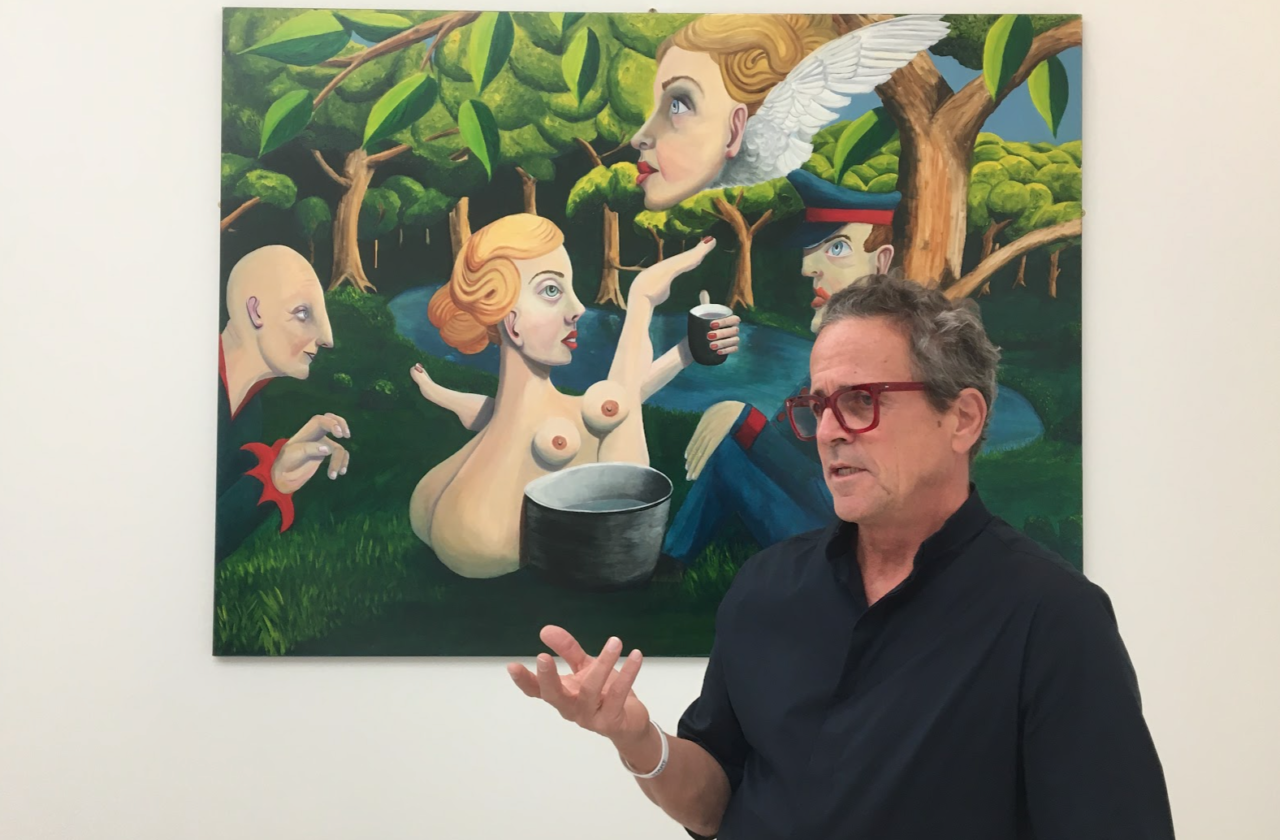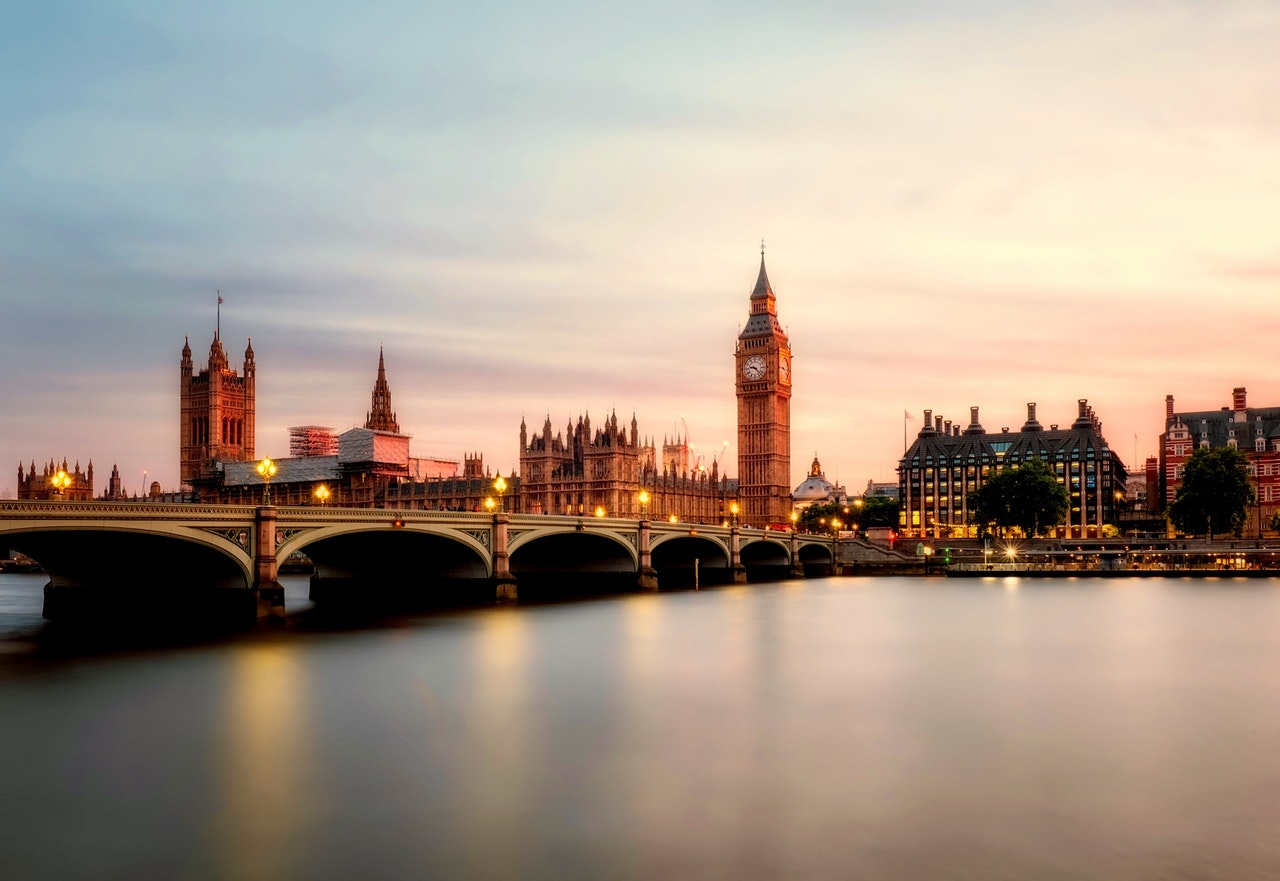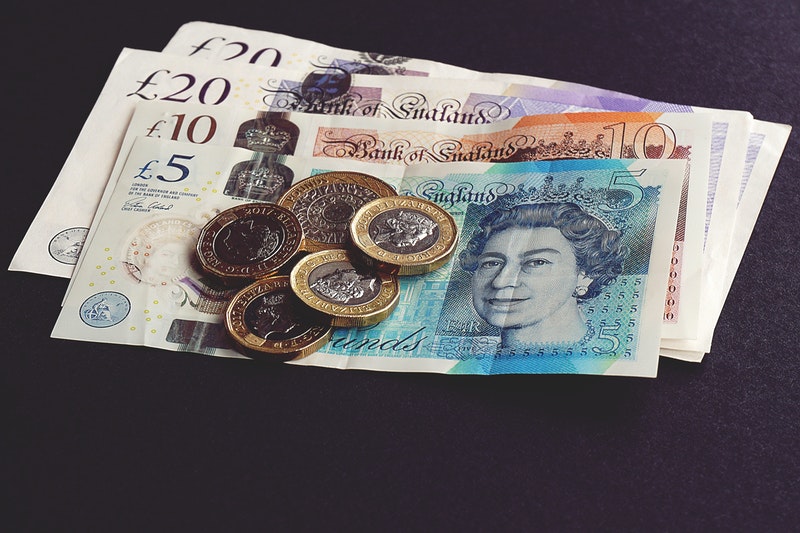Philipp Humm’s “Faust” – a prophetic retrospective at this year’s StART collection

As we approach a new year, it’s only natural to take a look back at the highs and lows of its predecessor. Sadly, for many people the highs have been in short supply of late, as 2020 and ‘21 bled together into seemingly one, dreary and fleeting year of lockdowns and loss. But however the pandemic continues to progress, there were a few months at least that offered a refreshing respite from our long hibernation. And could there be a more novel and exuberant way to step back out into the world than by visiting one of the most vibrant art fairs in Europe.
Since its inception in 2014, StART has consistently been one of the most influential platforms for discovering and nurturing emerging artists from all over the world. This year’s event at the renowned Saatchi Gallery in London saw the confluence of thousands – from artists to collectors to benefactors to simple appreciators.
I myself was an artistic person, once upon a time, a passion that sadly got shelved as life, health and new pursuits overwhelmed my daily routine. But just as the pandemic made me realise that I’d left those interests behind for far too long, a surprise invitation to an exhibition served as the perfect jump-start to a forgotten, former self. Brushing shoulders with the diverse and often flamboyant crowd that an art fair brings did make me feel like a bit of an imposter – who would have thought a dazzling fascinator would make one fit in, rather than stand out! Nevertheless, as I wandered the halls of the stunning Saatchi Gallery and took in all the artworks, thought about what I liked, disliked, appreciated or felt bemused by, something not unlike muscle memory started to kick in. The days of sketching, painting, composing, plowing through Gombrich’s mammoth “Story of Art” on a Greek Island beach slowly started to creep back in and by the end of the event, I felt …certainly not in my element, but much more at ease to consider the works around me with just a little more than a layman’s eye.
During a particularly balmy period of October, my day of art appreciation was to be sectioned into two particular parts. An early morning professionally focused preview of “the work” and a post-sundown soiree of networking and nibbles. A convenient advantage of not being quite of the full-blown artistic cloth is that I was naive enough to show up to the morning appointment dead on schedule – not exactly a trademark of the creative community. However, being there bright and early gave me an unfettered, in every sense of the word, view of the pieces I had come to inspect. Moreover, when the subject of my piece arrived, with the carefree elegance of a worldly, yet unpretentious character, I got an exclusive insight into one of this year’s most exciting StART participants.
The charismatic talent behind the particular collection I was invited to look at was that of Philipp Humm. A former tech CEO, on paper you might not think of him as a natural-born artist, but as soon as he stepped into the gallery, the artist vibe emanated from him in spades, and thankfully without any of the “weirdo” undertones that my philistinian perspective would have struggled to digest. At least not at 9 in the morning…
Humm and his wife Daniele were lucky enough to spend the lockdowns at their second home on the Côte d’Azur. The perfect location, both in setting and circumstance, to turn blank canvases into the vivid collection I had the privilege to enjoy first hand. For everything the pandemic has denied us, what it did cultivate was the chance for extensive self-reflection and a new wave of creativity. And Philipp certainly made the most of both!
The inspiration behind his collection is Goethe’s great epic “Faust”. For those unfamiliar with this work, Faust is a play in two parts, a tragedy based on the medieval legend of a concept we’re all too familiar with – man sells his soul to the devil. Our disillusioned anti-hero makes a deal with Mephisto (the Devil), promising his soul in exchange for infinite knowledge and skin-deep pleasures, while Mephisto’s bigger bargain is with God, to see who ultimately comes out on top, with Faust’s soul as the pawn.
Faust is a learned man, who feels that his scholarly pursuits have plateaued and denied him real-life experience. The Devil pledges to be his slave and help him attain and experience all he may desire, but the day that Faust feels truly fulfilled, the roles will reverse and he shall evermore serve as the devil’s slave in hell (Angel’s curse, anyone?). The journey of corruption begins with a visit to a witch, who restores Faust’s youth and vitality… and the appetites that come with it. All too soon he falls in love with a very young Gretchen, and the once virtuous girl soon falls pregnant – an unforgivable sin for an unmarried woman at the time. Evading justice following the murder of her brother, Faust abandons Gretchen, who, in desperation, commits infanticide and is condemned to death – a fate she welcomes, as penance for her sins.
Part 2 has a decidedly operatic tone, with even more themes of deities and myths. Faust finds himself in the court of the German Emperor, who is burdened with financial woes. Faust offers an ingenious solution – to print money, on the security of gold lying beneath the Empire. The Emperor demands proof of Faust’s alleged supernatural alchemy skills and asks him to conjure the heroes of antiquity – Paris and Helen of Troy. Mephisto, still the loyal servant, assists Faust in bringing both to the Emperor, and Faust immediately falls desperately in love with Helen. Faust gets transported to ancient Greece in his pursuit of her, and encounters many mythical beings along the way.
Eventually, Helen and Faust marry and have a son, but both wife and child tragically die in an attempt, like Faust, to reach for the unattainable. Desolate, Faust returns to Germany, where the grateful Emperor grants him the coastal region of the Empire. With yet another display of magic, Faust raises land from the sea at the site he’s been granted. Through toil, passion and guilty sacrifice, Faust is able to found a prosperous nation and finally feels complete satisfaction, which immediately seals his fate – he dies and the devil makes ready to claim his prize. But at the final precipice, Gretchen’s soul reaches out to Faust and he finds redemption in being reunited with his original love, as she guides him to salvation in heaven.
A story like that deserves a long exhale, and one can’t help but wonder how all these fantastical and religious themes can be practically translated to a modern audience – how a story with so many convoluted and often mind-boggling elements can be made relevant in today’s social environment? But, by both delving into all the different plotlines and taking a step back to look at the whole picture, you can see how the central themes of Faust have fundamental emotional connotations and a universal relevance, irrespective of era.
A desire for godlike greatness, instant gratification, satiation of primal desires, all keeping us blind to the inevitable pitfalls they bring, including the abandonment of morals and losing our grip on reality. These human faults are as relevant now as they have always been, and looking around Humm’s works, you can see how effectively he communicates these themes: through his choice of characters, compositions and complementary artistic styles.
If you were to read Faust, you might go into an exhibition inspired by it with morose expectations: imagery of austere religion, sin, guilt, death. But stepping into the light, airy gallery space, you’re instantly taken in by the explosion of colour, even from across the room.
The initial impression of the collection is very inviting and unexpectedly fun. It’s only upon closer inspection that you see the gravity that each painting and sculpture carries. Not an unfitting effect, considering the aforementioned themes they entail.
So let us take a turn about the room…
We will begin with UNLEASHED – a striking piece to start off the collection. We see a “suit” tumbling off a bull, on a backdrop of the Earth. The hedge fund manager is a common character in Humm’s pieces, representing personalities like Jobs and Weinstein – shining examples of powerful men who stopped at nothing to keep reaching for more. Some truly made their mark, but at great sacrifice, while others experienced the very fall from grace Mephisto will have hoped for. The bull has multiple interpretations, since it is a common image of myth and legend, while of course also being the infamous Bull sculpture on Wall Street. The sleek lines of the tumbling man, (my inner geek can’t help but draw comparisons to Michael Rosenbaum’s Lex Luthor), intertwined with that of the bull, as their joint collapse seems to rain on the whole world – a clear representation of the 2008 financial crisis. Could there be a more Faustian example of hubris? Just as the Emperor began printing money, so the quants leveraged their obscene wealth against the whole world economy and people’s livelihoods.The element of this painting that struck me most, however, was the nude woman holding the skull. Despite her back being turned to us, you can’t help but be taken in by her, following her gaze. You can almost see the pensive look in her eyes as she regards the skull. As Humm described it, people can only truly know themselves if they face their mortality. That to live on the promise of an afterlife, a paradise, isn’t really living, but going through the motions of a shallow existence, while constantly waiting for something better.
THE TRAGIC HERO is another stark reminder that Faust sacrificed his morality in pursuit of omniscience. A line up on horseback, representing great leaders of old, like Alexander the Great, and our hedge fund suit, coming face to face with Napoleon. Humm is a great admirer of Napoleon as a significant personage in the history books of military leadership, not to mention another ideal example of pride and ambition leading to calamitous downfall. As Faust regards his inevitable future, you can’t help but feel that, perhaps, so are we.
We come now to a series of four paintings of beautiful women. These are Gretchen, in red, and Helen of Troy in white. The two loves of Faust’s life, the human and the divine. The inviting, slightly ajar doorway behind them leading Faust to the afterlife… the final redemption he only gets by embracing the love of Gretchen, giving up the self-destructive notion of chasing a god, as he tried with Helen. THE CAT is a particularly interesting entry in this quartet. Though such things were more normal in centuries past, Gretchen is only in her early teens when Faust woos her. A parallel to Nabokov’s Lolita, Gretchen only just begins to transition from child to woman and the cat sitting in her lap symbolises her sexual awakening. The Botticellian pose and the smooth curved lines of the feline visually evoking the lustful elements of becoming an adult.
MAGIC POTION is a very visually fun painting. Much of Humm’s work is influenced by Picasso and Dali and this particular painting was actually inspired by a Picasso he saw at a special exhibition in Paris. This is the scene where Mephisto brings Faust to a witch who gives him a potion that makes him envisage the most beautiful woman in the world – Helen – and awakens a sinful desire for Gretchen in the process. This composition made me think of the vibrant jungle scenes of Henri Rousseau and even to a certain extent medieval tapestries. But between the medieval context of the poem and inspiration from modern artists, Humm also likes to channel the Renaissance in his work, which is particularly evident in the sensuality of this scene.
WHAAM (see below) is Philipp’s unofficial favourite of this exhibition. It’s certainly been picked as the front piece of all the works, and although Humm doesn’t tend to play favourites with his creations, he favours this one purely because it was the last one of the collection, so completing Whaam also signalled the completion of the whole Faust journey. Humm’s work has been predominantly described as “Pop Expressionism” and nowhere is this style more prominent than with Whaam. The falling Mephisto beneath an androgynous angel, thrown off balance by a Lichtensteinian blast. Good and bad being eternally intertwined concepts, where one cannot exist without the other. As we wonder if there is hope of true absolution for Faust, or for us, the duality of good vs evil makes you consider – is self-destruction and a fall from grace necessary for redemption?
My personal favourites of the collection are somewhat divergent from the pieces described thus far. INFLUENCERS and the WITCH have a distinctly different colour scheme and style. The women’s faces bear much more realistic detail and the dark blue and white hues give these paintings a more crisp and modern feel – I imagine exactly what Humm wanted to achieve when thinking about how to update Faust for a current context. The figure of the witch resembles the many armed Hindu goddess Durga and triggers Faust’s fall into temptation. Trumping religion, Humm thinks that social media has become the new “Opium of the Masses” and Influencers is perhaps the most universally palatable piece of the collection. You don’t need to know Faust to recognise the dangers of fake imagery and judging your life by other people’s superficial validations. We’re all looking up to Barbie, even now!
The perfect compliment to Philipp’s paintings are his sculptures, that beautifully adorn the centre of the collection. BARTHOLOMEW’S SKIN is a singular piece that’s as chilling as it is poignant. Certainly not something the average person would hang on their wall at home, but this small installation is a daring departure from its colourful, romanticised neighbours. Having come to the exhibition early, I got to see it both dark and lit up. Taken from Michelangelo’s Sistine chapel fresco, this image represents God’s final judgement of man. Switched both on and off, the skin has a unique feel. You’d think the eeriness of the “flesh” would be alleviated by turning on the internal light, but glowing through the skin, the light is more reminiscent of lava… of burning in hell.
The rest of the sculptures, all bronze, are far less emotionally off-putting and demonstrate Humm’s skill with proportion and texture. As his wife Daniele points out, Philipp is particularly adept at horses and he recreates that graceful physiology beautifully in RISING TO THE SKIES. Channeling more of Michelangelo, who was as well known for his stunning sculptures as the Sistine Chapel, THE CREATION OF ADAM is a gorgeous reproduction of the fresco, with the full bodied lines hinting to the David, Pieta or Laocoon. Arguably the most visceral of the pieces is the BULL LEAPING, which was inspired by an ancient Greek mosaic, depicting the gladiator fights featuring often life-threatening bull acrobatics. The impetus of the composition makes you feel the exhilaration and anxiety were you to watch such a spectacle first hand. I especially loved the sculptures and found myself looking forward to the day I can start collecting art. Like Philipp, I’m also a huge fan of Picasso and Dali, which makes no surprise why I loved the sculptures so much – although not intended, I found these pieces very similar in style to Picasso and Dali’s unique illustrations of Don Quixote, which I’d had the chance to see in Paris many years ago.
This exhibition was not Humm’s first foray into the world of Faust. Philipp wrote, produced and directed “The Last Faust” – a feature film that reimagines the titular character in the year 2059 in a society ruled by AI, starring the great Steven Berkoff. The film is also accompanied by an illustrated book, co-written by the up and coming comedy writer Ellen Waddell, who not only assisted Humm with the feature screenplay but also, as he put it, turned his free-flow narrative into the finished novella, which is illustrated by his original pencil sketches for the paintings. The film is streamable on Prime and will be released in Germany next year. He is particularly proud of how well the German subtitles were made, with exceptional accuracy of matching the lip movements of the actors without deviating from Goethe’s original text, for which Humm has great respect. Not unlike Shakespeare, Goethe’s work influenced the German language, with many common expressions taken from his writing, like exclamations of Ach! and Ja!
That morning I was also lucky enough to meet Philipp’s wife and collaborator Daniele Mah. A fine art photographer and curator, she defines European beauty and chic. Her poise can easily be detected in the setup of Humm’s exhibition, as he proudly shared how influential her support and expertise were in the completion of his collection.
StART was the first time Philipp’s works have been on sale, with prices per piece ranging from £4,000 to £22,500 – sadly out of my price range, but certainly not ridiculous for both serious and amateur collectors alike. A lovely advantage to his past life as a tech investor is that he still maintains great relationships with his well-to-do former Silicon valley brethren and he encourages them to spend their excess income on becoming avid collectors of art, and his work. There’s certainly no need for the cliché “starving artist drawing inspiration from destitution” tropes here! But Philipp is by no means a snob. He bought his first painting at the age of 19, drove it home on the back of his humble motorbike and still has it and loves it. For all the pomposity that surrounds the pricing and relevance of art, he’s a firm believer that the true power of art is that no matter where or how you find it – it means something to you and stays with you.
So after the success of “Faust”, what’s next for Philipp Humm? He’s had exhibitions in LA, Vegas, Singapore, Germany and Italy. He thinks of London as the only truly international European city, but does also think his style of art is well suited to New York and hopes to exhibit more of his work in the Big Apple in the future.
In terms of inspiration and themes, he’s still thinking about what his next project might be. He expressed an interest in dipping his toe further into filmmaking, though not any time soon. He’s more keen to play around with more literature, citing Beckett and Kafka as interesting possibilities, though he worries their themes may be too narrow in scope for a broader audience. Afterall, Faust’s fantastical story is ever grounded in universal themes we can all relate to.
With that in mind, my overall take on this exhibition is that it’s a wonderfully accessible marriage of introspection and a macro analysis of the world – past, present and future. As Philipp puts it, we make Faustian decisions every day, from big to small, enjoying the simple instant gratification, while opting for indifference to its long-term negative effects. Now, I’m certainly not the kind of person to have an existential crisis brought on by a piece of moving art, but examining Humm’s pieces does leave a lingering sensation of self-reflection and a more heightened appreciation of where we’re going, both individually and as a species. And I really really wish I could afford one of his sculptures!





